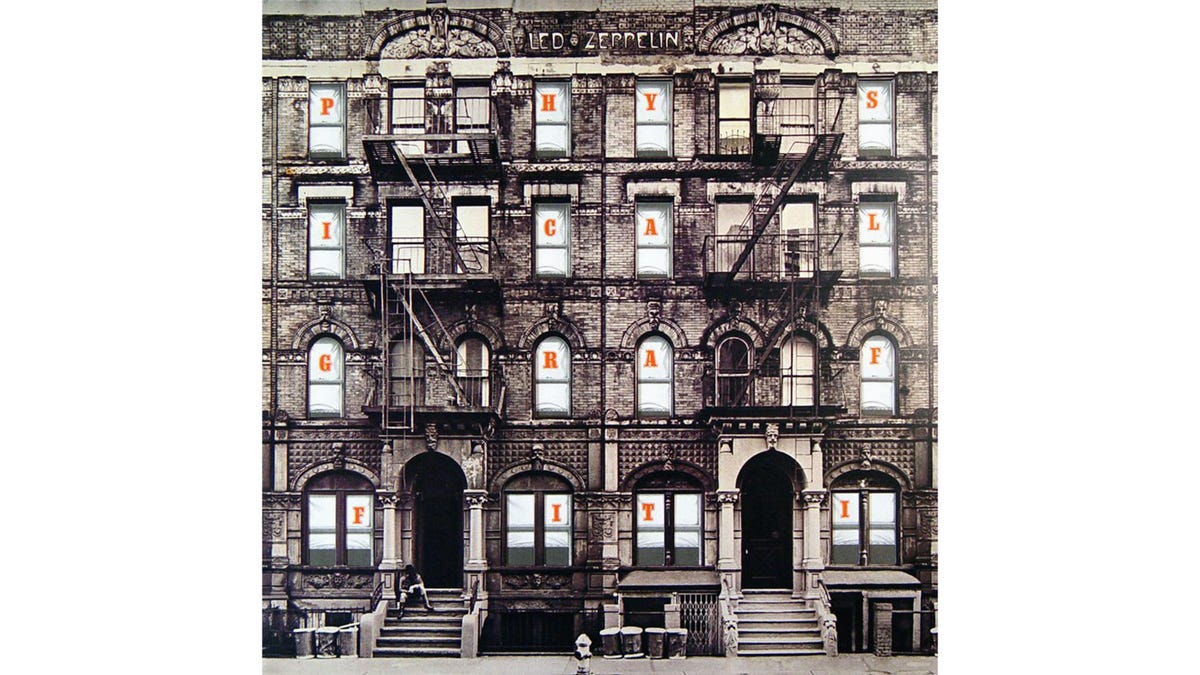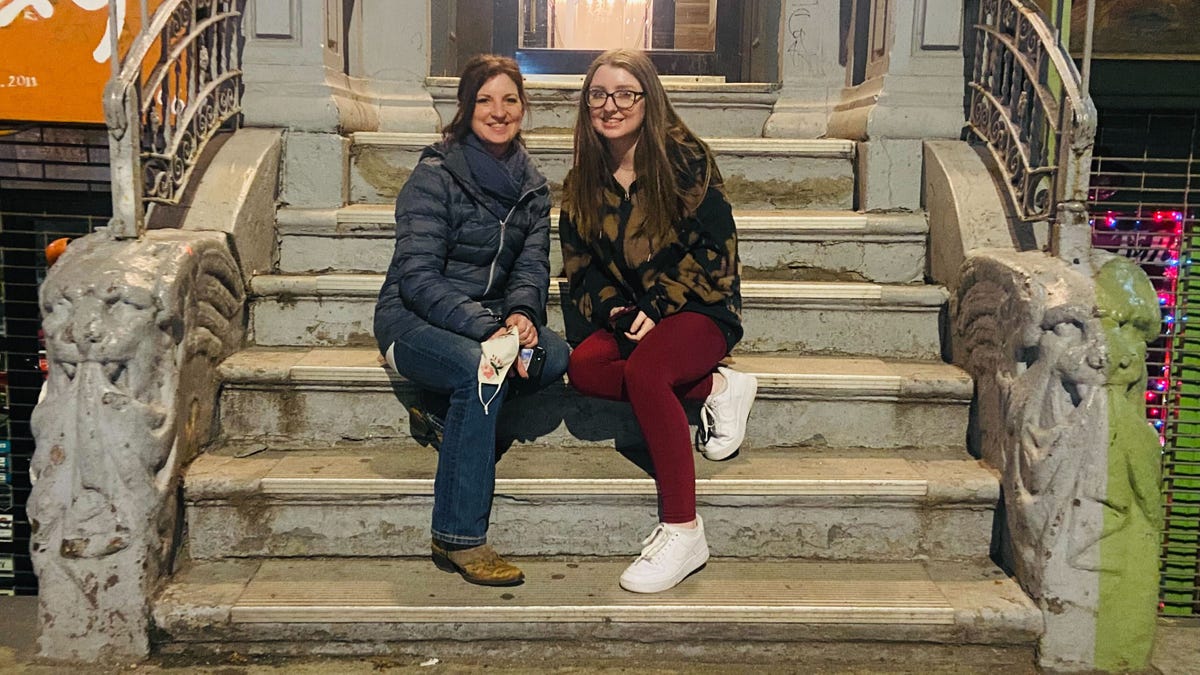Fox News Flash top headlines for March 12
Fox News Flash top headlines are here. Check out what's clicking on Foxnews.com.
New York City serves as a stage for much of rock ‘n' roll history: Buddy Holly electrifying The Apollo in 1957, the Beatles' arrival in 1964, punk rock's ascendancy in the 1970s, and epic moments before and since.
One otherwise ordinary Big Apple apartment building was struck twice by the hammer of the gods, first by Led Zeppelin and then by The Rolling Stones.
It became a rock music landmark along the way, plus a coveted selfie and Instagram photo spot.
HERE'S HOW ABE LINCOLN, CORNED BEEF CONNOISSEUR, FLAVORED AMERICA'S ST. PATRICK'S DAY CELEBRATIONS
It’s a gritty six-story one-time tenement at 96-98 St. Mark’s Place in the now trendy East Village of Manhattan that is recognized by rock fans around the world.
"The building just looked like it was ridden hard and put away wet," legendary rock album designer Peter Corriston told Fox News Digital.

The cover of Led Zeppelin's "Physical Graffiti" album, released in 1975. (Alamy)
The façade appeared on the cover of Led Zeppelin’s thunderous mega-hit double disc "Physical Graffiti" in 1975.
The stoop of the old brownstone harlot starred six years later in the Rolling Stones music video for "Waiting on a Friend."
"The building just looked like it was ridden hard and put away wet."
Corriston is the artistic link who connects two of the biggest acts in rock history to the same address.
The Zeppelin-Stones connection, between two longtime rival British bands, makes 96-98 St. Mark’s a bucket list photo op for rock fans from around the world.
NEW YORK GIRL, 9, BAKES CAKES TO HER HEART'S DELIGHT, EARNS A PRETTY PENNY FROM TIPS ALONE
Corriston worked with Led Zeppelin when he was tabbed to help create an album cover that captured both the artistic complexity and brutal grit of the band’s music.

Renee Gaura van Gestel and her daughter Shaylen Rose van Gestel, tourists from Massachusetts, on the stoop of 96-98 St. Mark's Place in Manhattan, made famous by Led Zeppelin and The Rolling Stones. (Kerry J. Byrne/Fox News Digital)
"Led Zeppelin has depth and they have scale," said Corriston.
He was struck by the idea of representing their music by "trying to find some kind of depressed architecture that has a lot of physical graffiti in it, and a lot of stories inside."
MEET THE AMERICAN WHO INVENTED THE ELECTRIC GUITAR AND INSPIRED ROCK ‘N’ ROLL
The St. Mark’s Place walk-up apartment building possessed both the tattered bravado of hard life and the architectural nuance of aspiration – matching Zeppelin's blues-based but increasingly progressive sound.
"Physical Graffiti" sold 16 million copies, putting the image of the old tenement in the hands of music fans around the world.
The St. Mark's apartment is commonly known today as the "Physical Graffiti building." A shop at the foot of the stoop is called Physical Graffitea.

Jimmy Page of Led Zeppelin, left, in concert at Madison Square Garden in New York City, 1973. Also, Mick Jagger and Keith Richards of the Rolling Stones in concert in the Netherlands in 1982. (David Redfern/Redferns; Rob Verhorst/Redferns via Getty Images)
Corriston went to work for Rolling Stones frontman Mick Jagger in 1979, he said, and helped design the cover of the band’s 1981 hit album, "Tattoo You."
CLICK HERE TO SIGN UP FOR OUR LIFESTYLE NEWSLETTER
It was the early days of MTV. The band needed a location to shoot the video for "Waiting on a Friend," which became one of the album’s most popular tracks.
Jagger bides time on the stoop of 96-98 St. Mark’s as his guitarist buddy Keith Richards struts down the crowded streets of Manhattan to meet him.
CLICK HERE TO GET THE FOX NEWS APP
The unique lion’s head reliefs on the stoop of 96 St. Mark's Place provide the giveaway clues. They're seen on both the "Physical Graffiti" album cover and in the "Waiting on a Friend" video.
One major difference that's worth noting: The building on St. Mark's Place has six floors.
The image on "Physical Graffiti" has only five floors. A floor was edited out to make the structure fit the square album cover.
For more Lifestyle articles, visit www.foxnews.com/lifestyle.









































